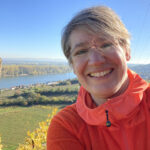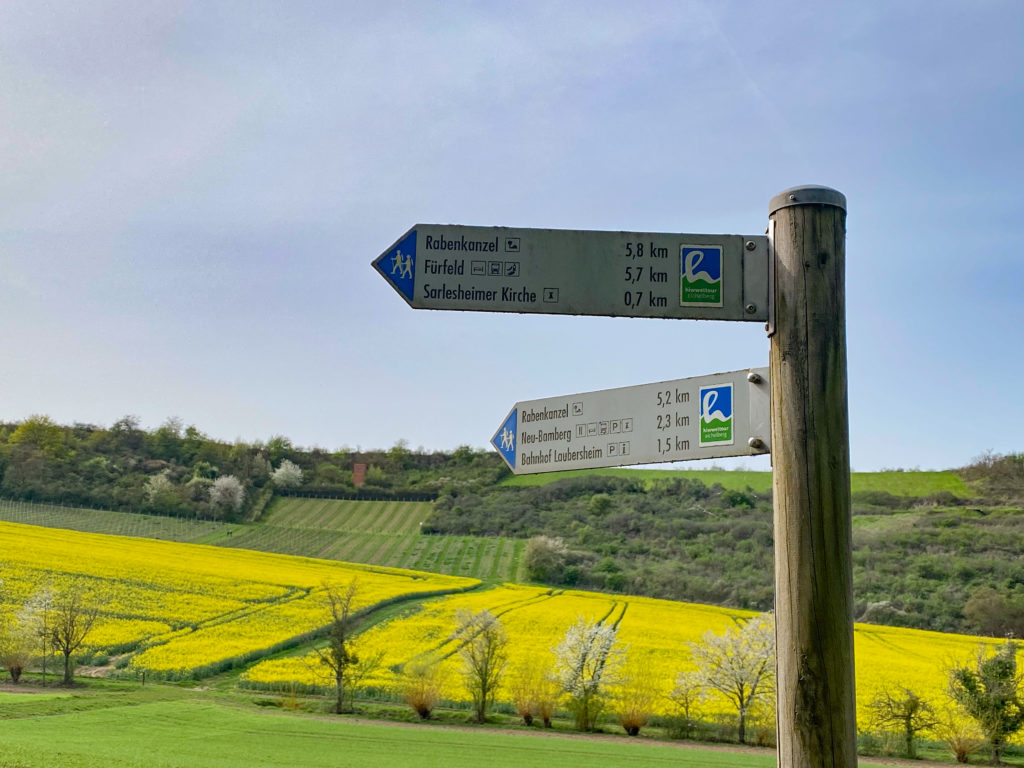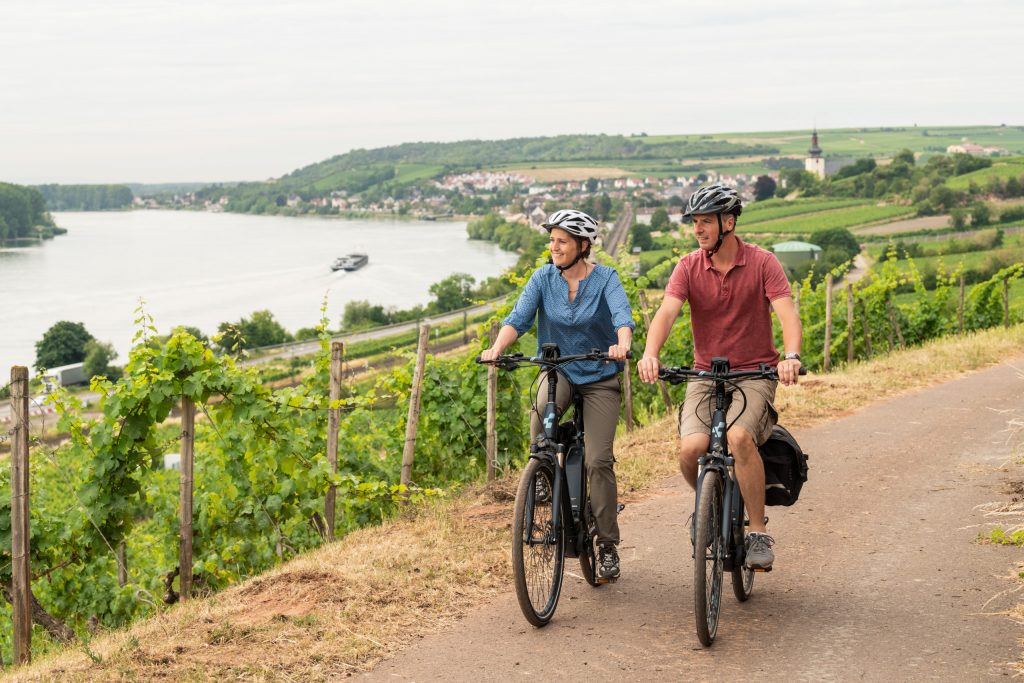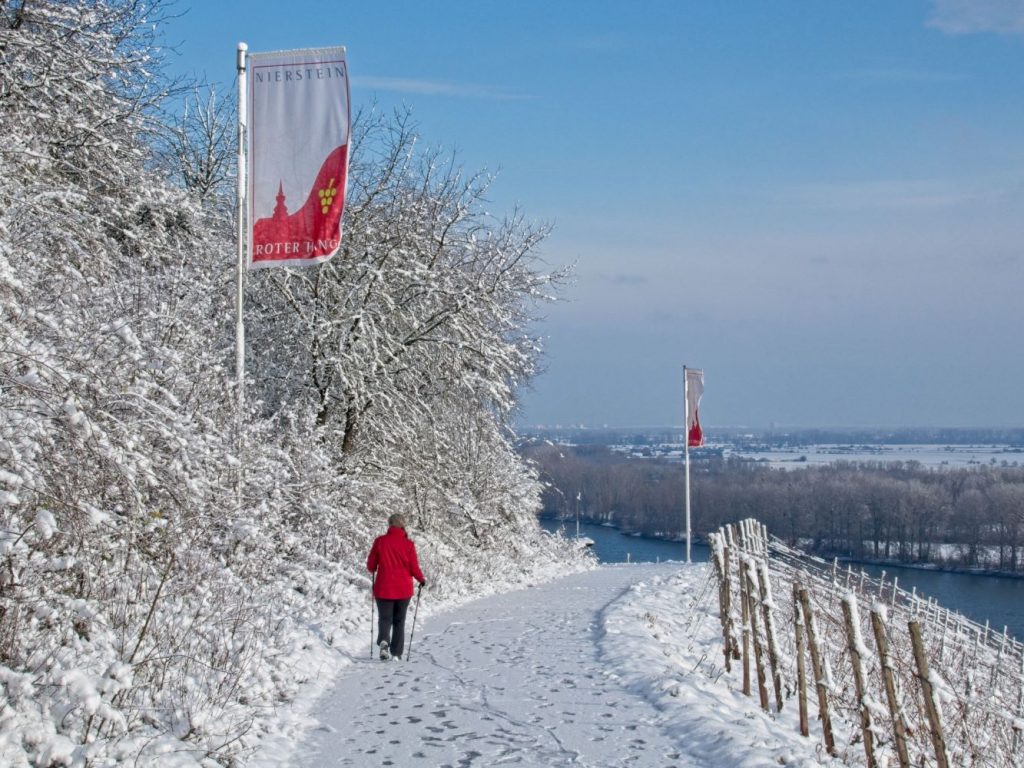Active in nature - that is always good, and so I will cycle along the approx. 68 km long and very varied "Selztal-Radweg". We start in Orbis (first place in the Donnersberg district), here begins its above-ground course. Every Rhinehessian has heard its name; the popular name giver for streets, companies, clubs, buildings and even for a village in Rheinhessen: the Selz! It ripples leisurely from the North Palatinate Mountains across the Rheinhessen hills until it finally flows into the Rhine near the northern Ingelheim district of Frei-Weinheim. Along the route there is supposed to be a lot of nature and very special inhabitants... that's what I want to discover! Accompany me on the Bicycle tour across Rheinhessen along the Selz river!
On the road with the frog
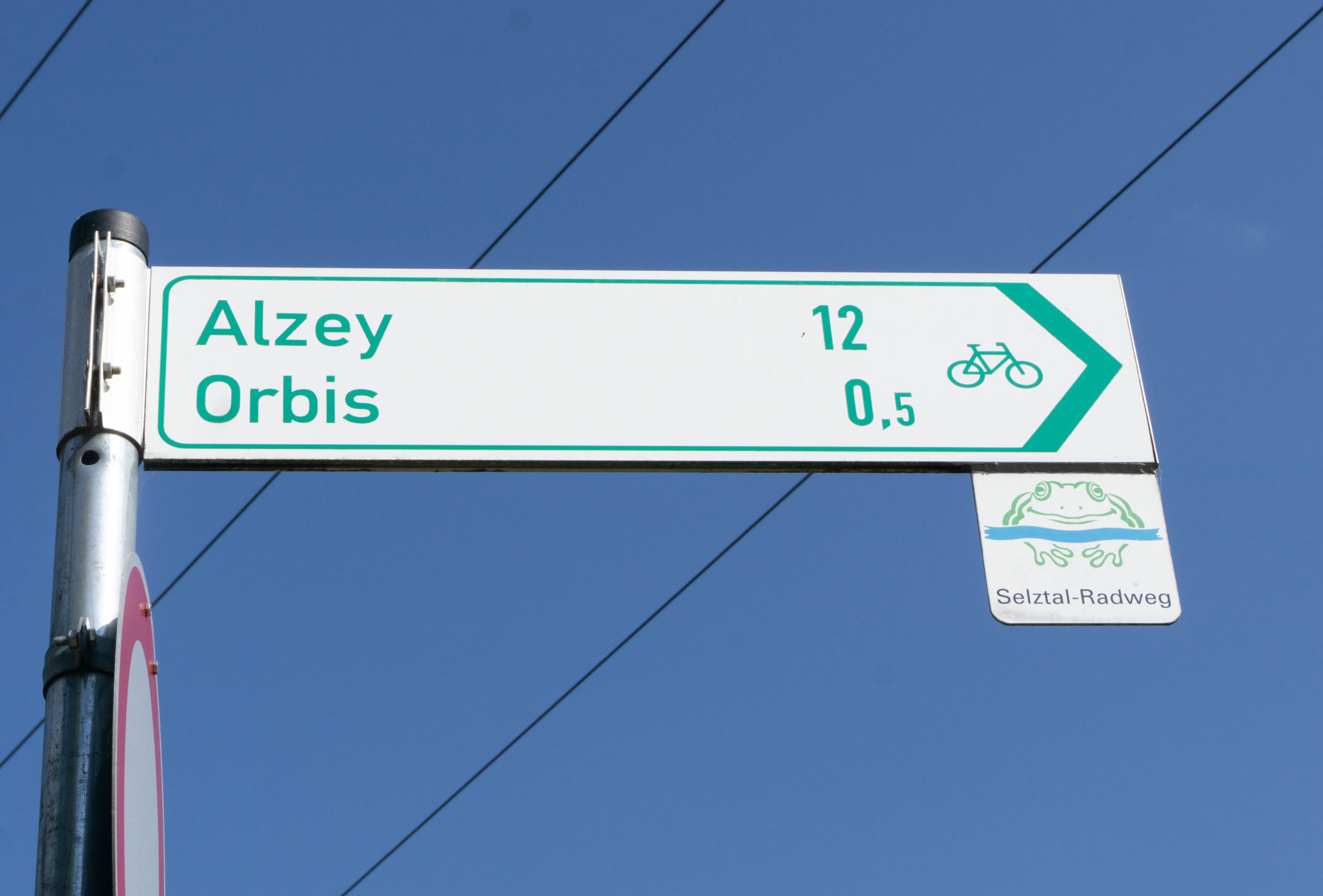
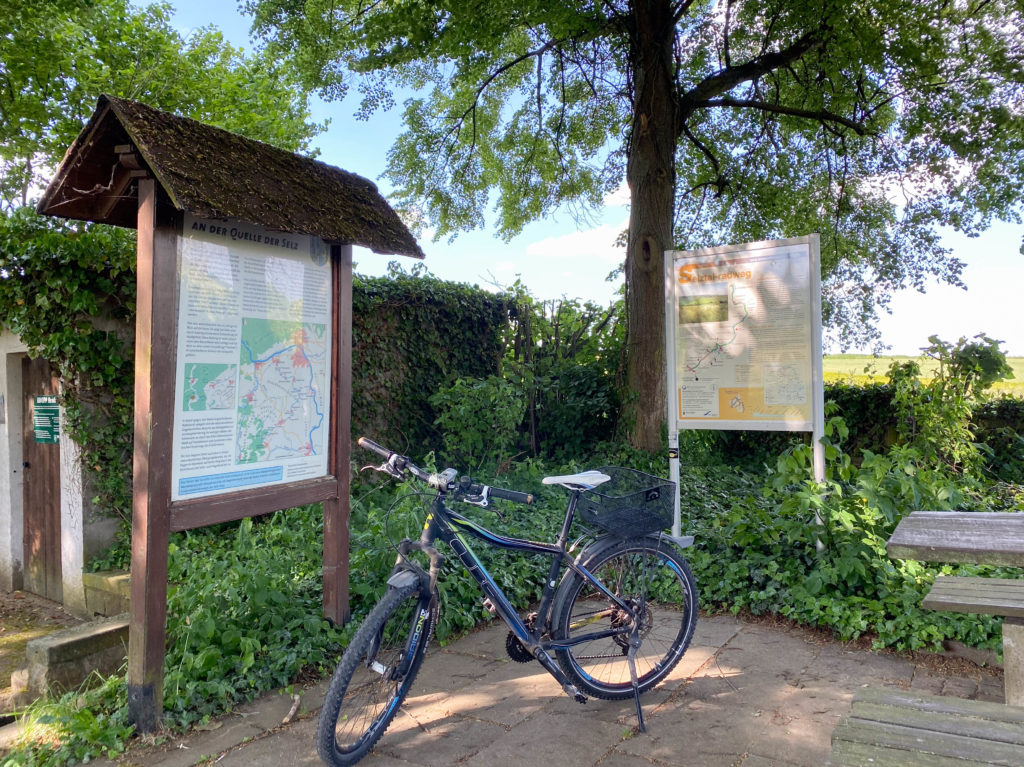
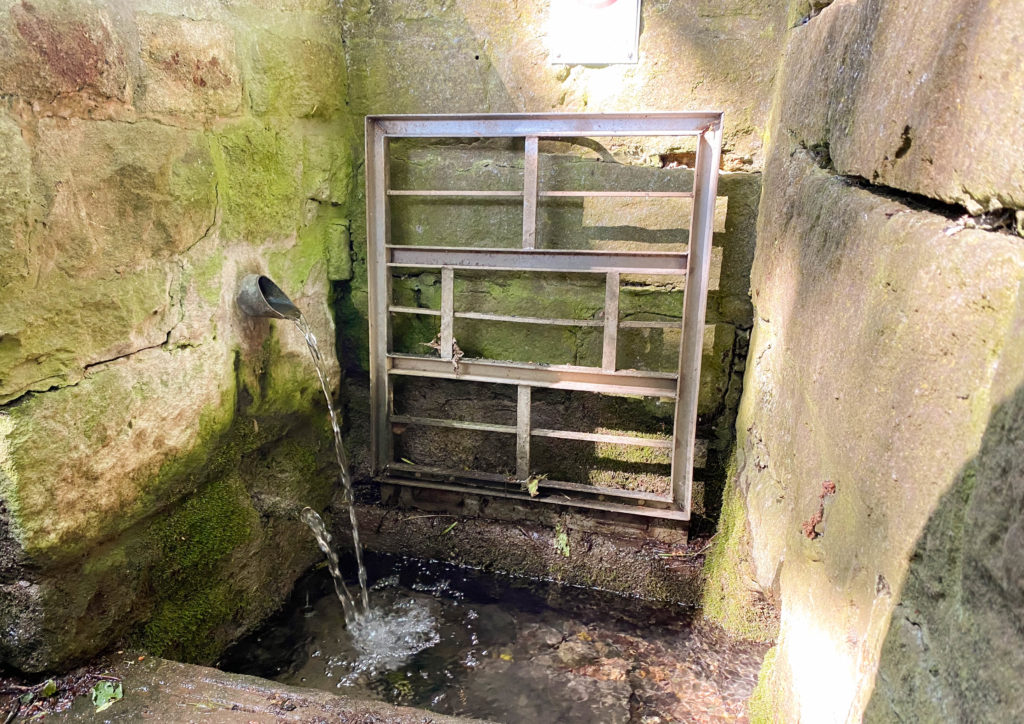
With the frog in view, we start in the small village of Orbis. For the first few kilometers, the stream flows tranquilly in the direction of Morschheim, which already belongs to Rheinhessen. Like a green ribbon, the small stream, lined by countless willows on the banks, meanders through the landscape, past meadows and fields. The Selz once powered more than 40 mills with its water power, but it was never a supplier of drinking water. Forced into straight creeks, the Selz resembled a sewer in many places and became increasingly polluted in the course of intensive agriculture. Thanks to several renaturation measures, it is once again meandering through the floodplain and the water quality has improved significantly, now providing a habitat for many rare species of flora and fauna. The project is called "Unleashing the Selz".
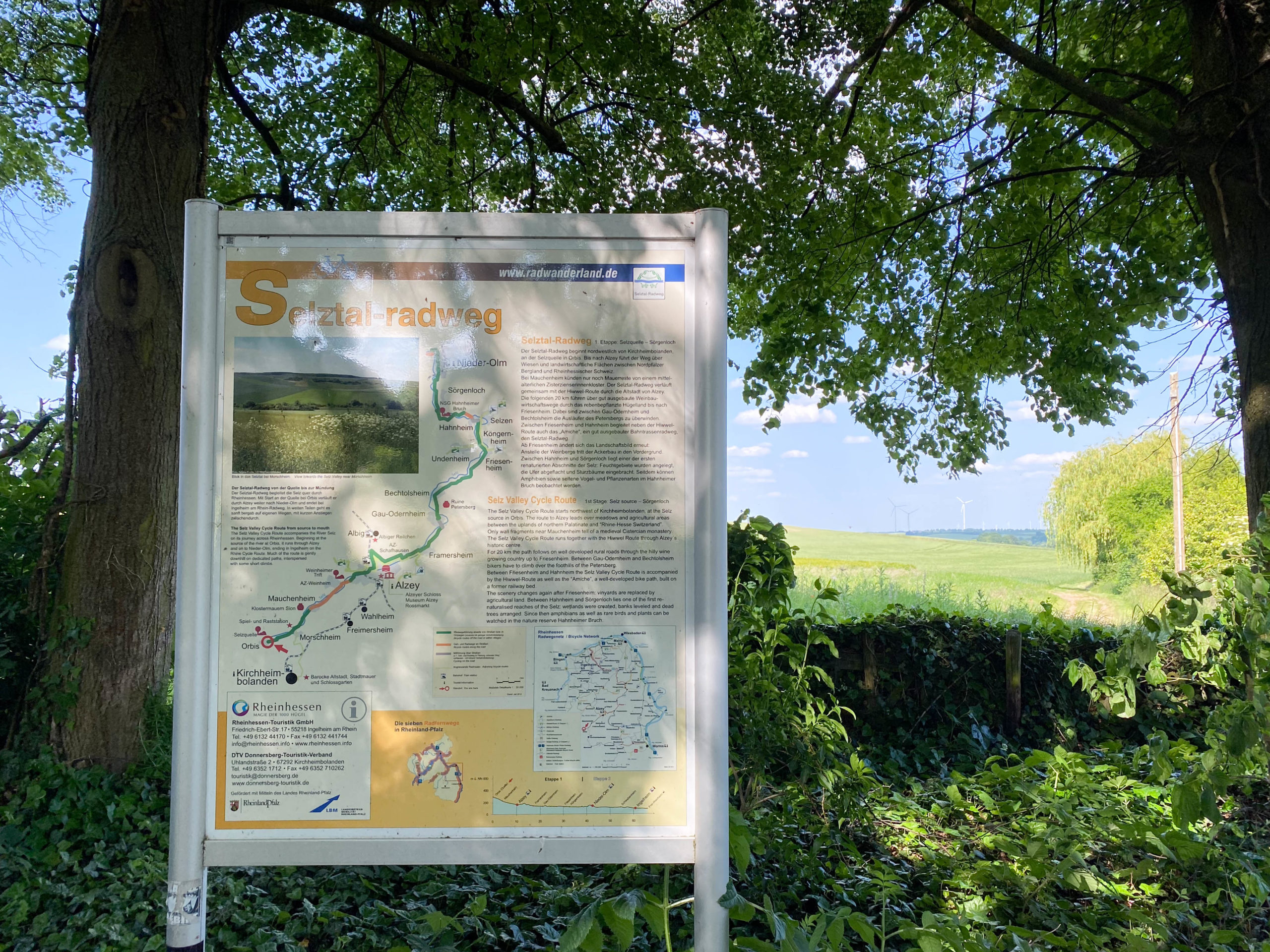
Beaver & Co.
We are approaching Alzey, here the rural idyll along wild nature ends for the time being, but the route holds another highlight for us. The bike path leads us to the "permanent dam" in Alzey. A small lake that serves as flood protection before Alzey.
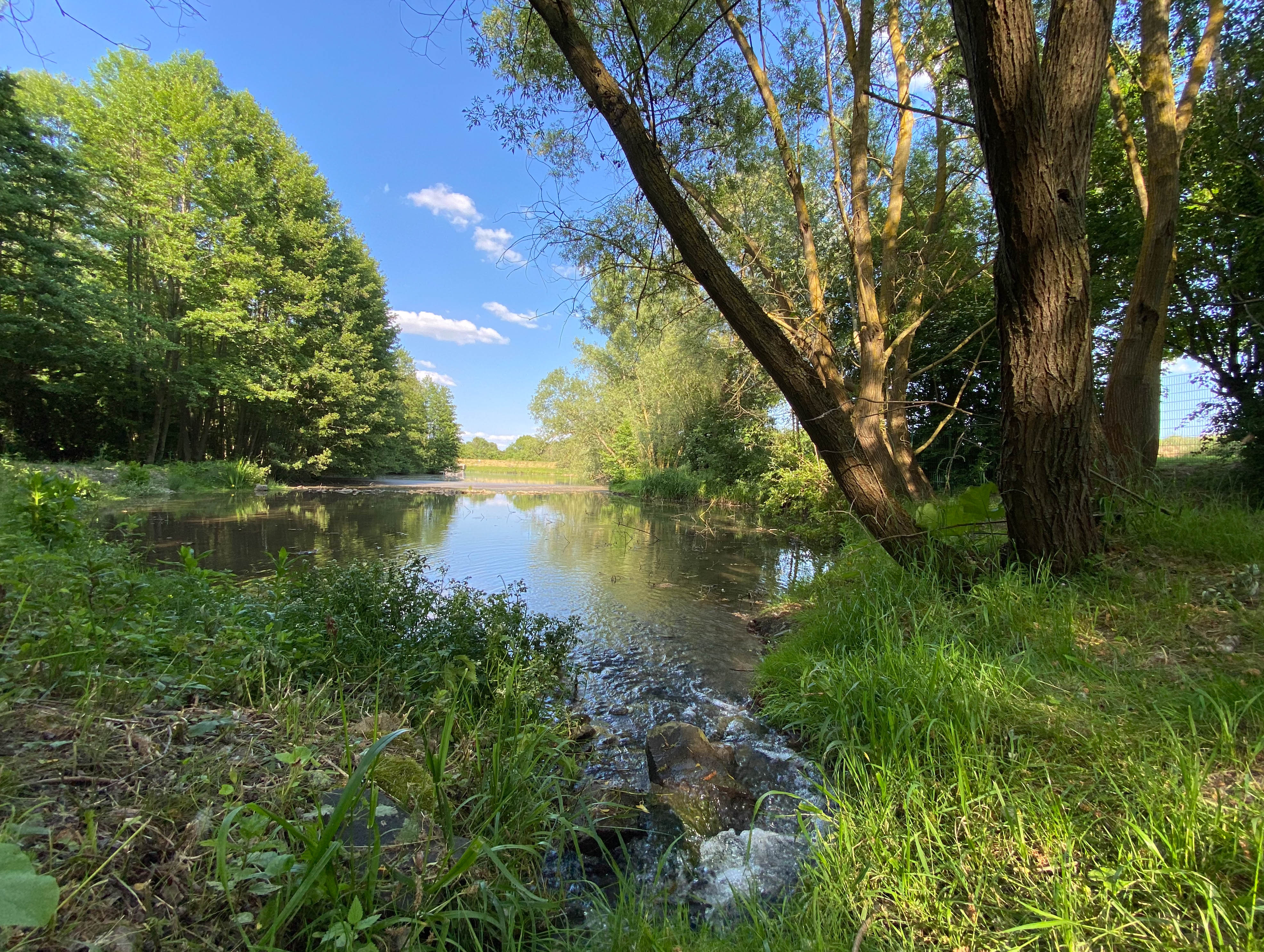
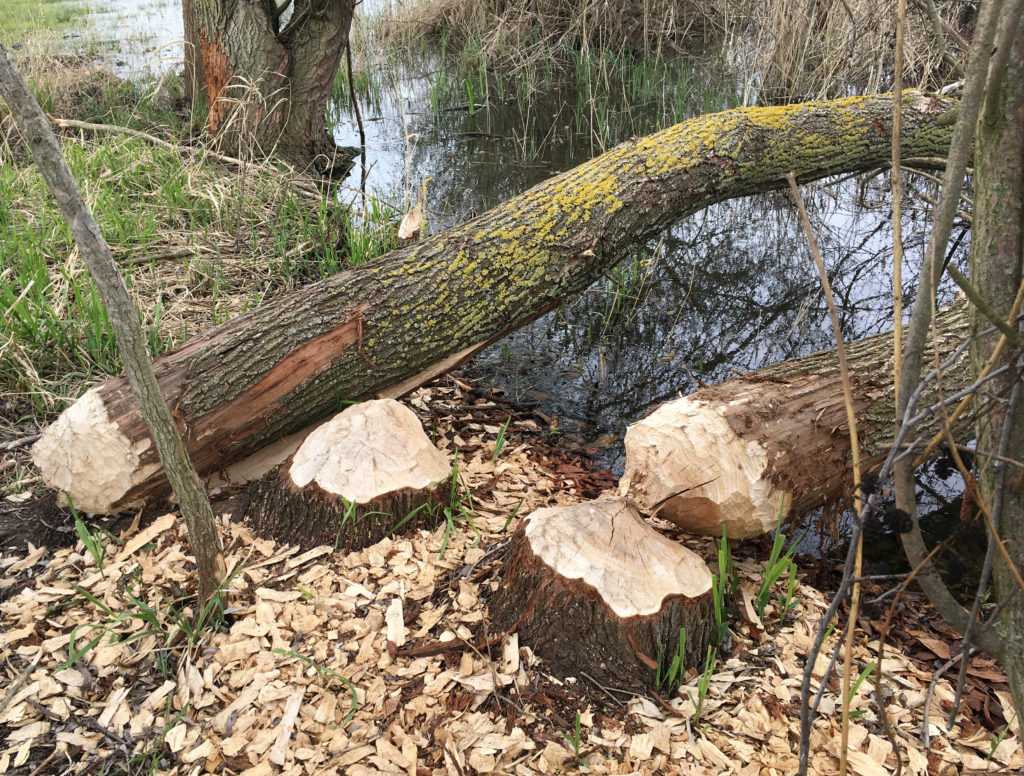
The Egyptian geese, coots and mallards feel very much at home here and are in no way shy of visitors. But another inhabitant has settled down here: quite naturally it swims through the cool water and climbs the adjacent meadow in search of something to eat. The nutria (Myocastor coypus), also known as the beaver rat, originally from South America, lives here in harmony with the ducks and fish in Alzey's permanent pond. At first glance, it resembles the beaver with its distinctive orange incisors, but its species can be clearly identified by its tail.
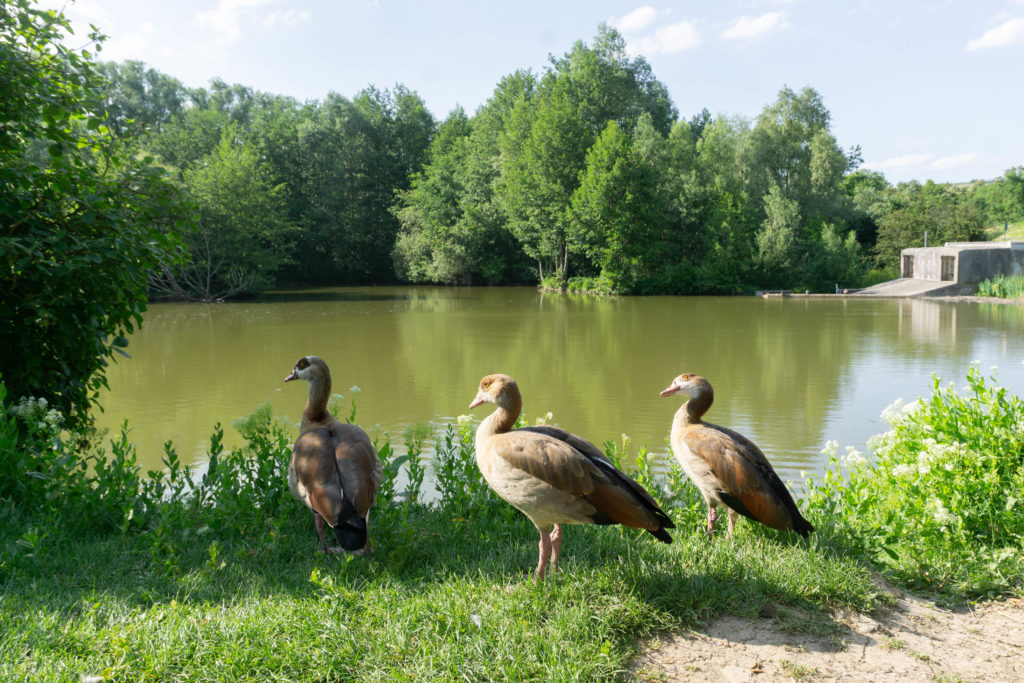
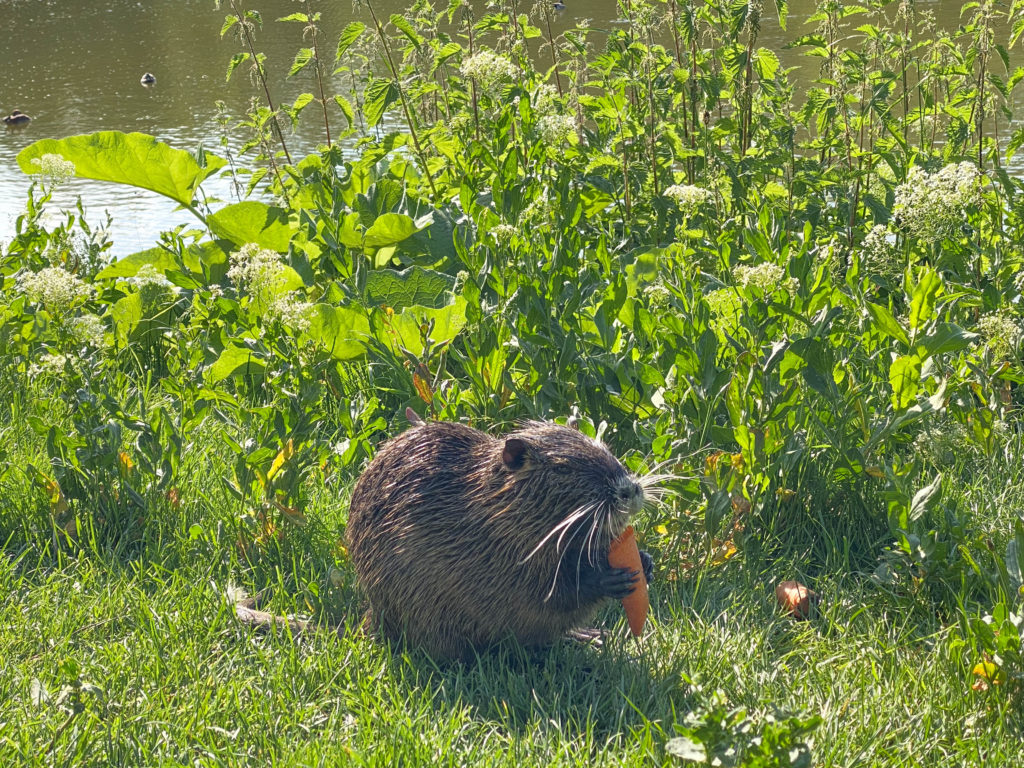
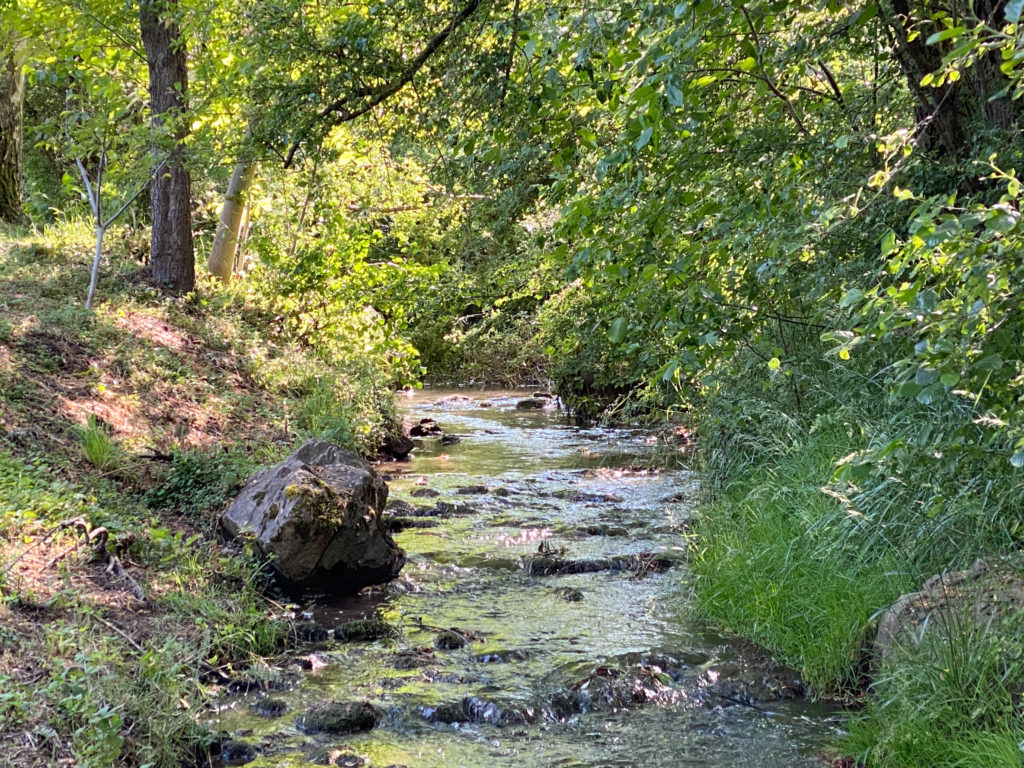
Also, some beaver tracks have been discovered here, but it does not seem to be active here currently.
We get back on the saddle and cycle through a residential area along gardens and the gently rippling Selz River. Then the river suddenly disappears from the face of the earth. We look for it here in vain, because its course in the Volkerstadt is underground and it only reappears on the eastern outskirts of the "secret capital of Rheinhessen". Before we trace the whereabouts of the Selz, we take a break at the Rossmarkt. The stately horse must of course be photographed on this route, after all we want to document animal encounters of all kinds along the Selz Valley Cycle Route.
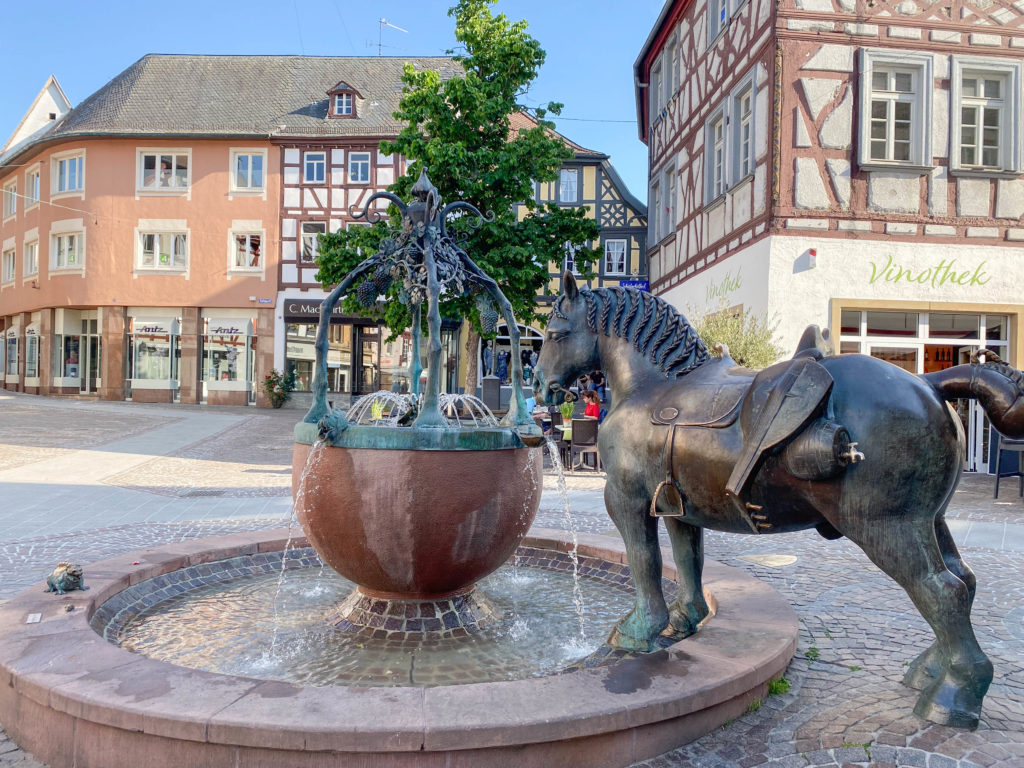
Past Alzey Castle in the direction of Schafhausen, it becomes more natural and idyllic again. The landscape has changed considerably here in recent years. Due to the renaturation of the Selz near Schafhausen, the beaver (Castor fiber) has become native here for more than two years. The landscape designer has dammed the Selz with his felled trees with his nail zeal. Thus he has achieved that the water level has risen significantly and the entrance to his beaver's lodge is below the water surface. For many visitors and residents in Schafhausen, this was somewhat disconcerting; now the protected mammal has been granted free "rodent play space" and is pleased that the formerly heavily hunted and rare beaver has found a home in the renaturation area. As the largest European rodent, the vegetarian feeds on the bark, fresh branches and buds of its felled trees, which it also uses to dam its dam and build its beaver lodge.
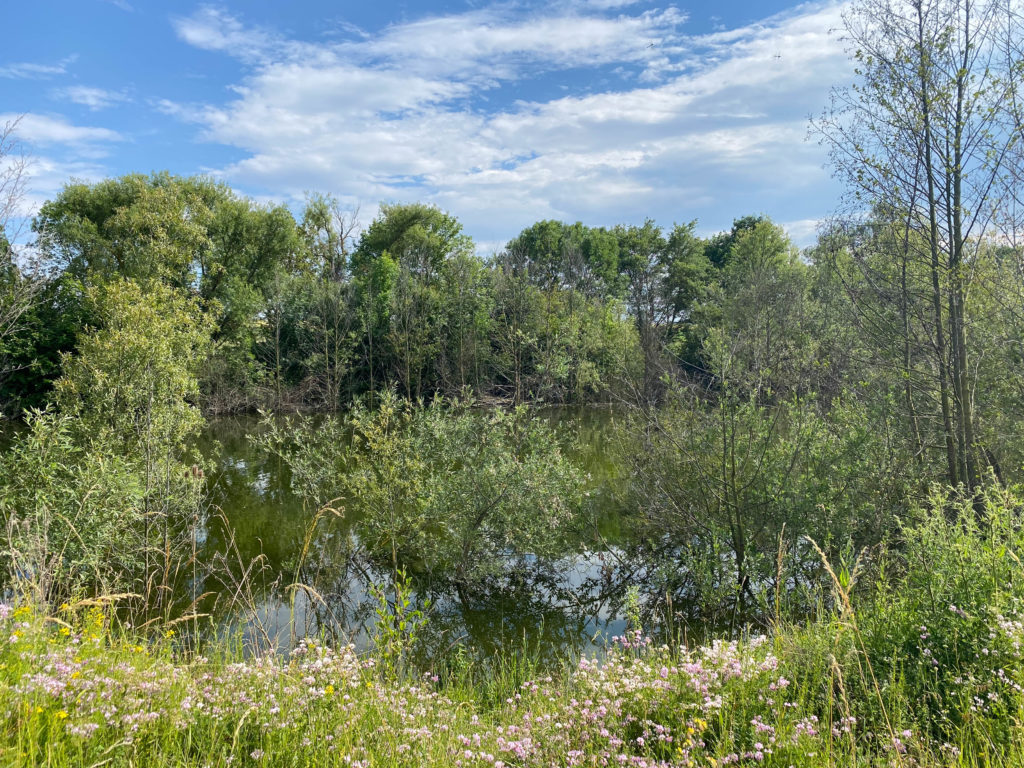
It is worthwhile to take a break here and walk around the "Beaver Lake". The biodiversity of moths, butterflies, insects, plants and life on the water will make the heart of any nature lover beat faster. If you pause for a while on a bench at the edge of the lake, you can hear the "köw" calls of the coot or admire a cormorant in the branches near the shore.
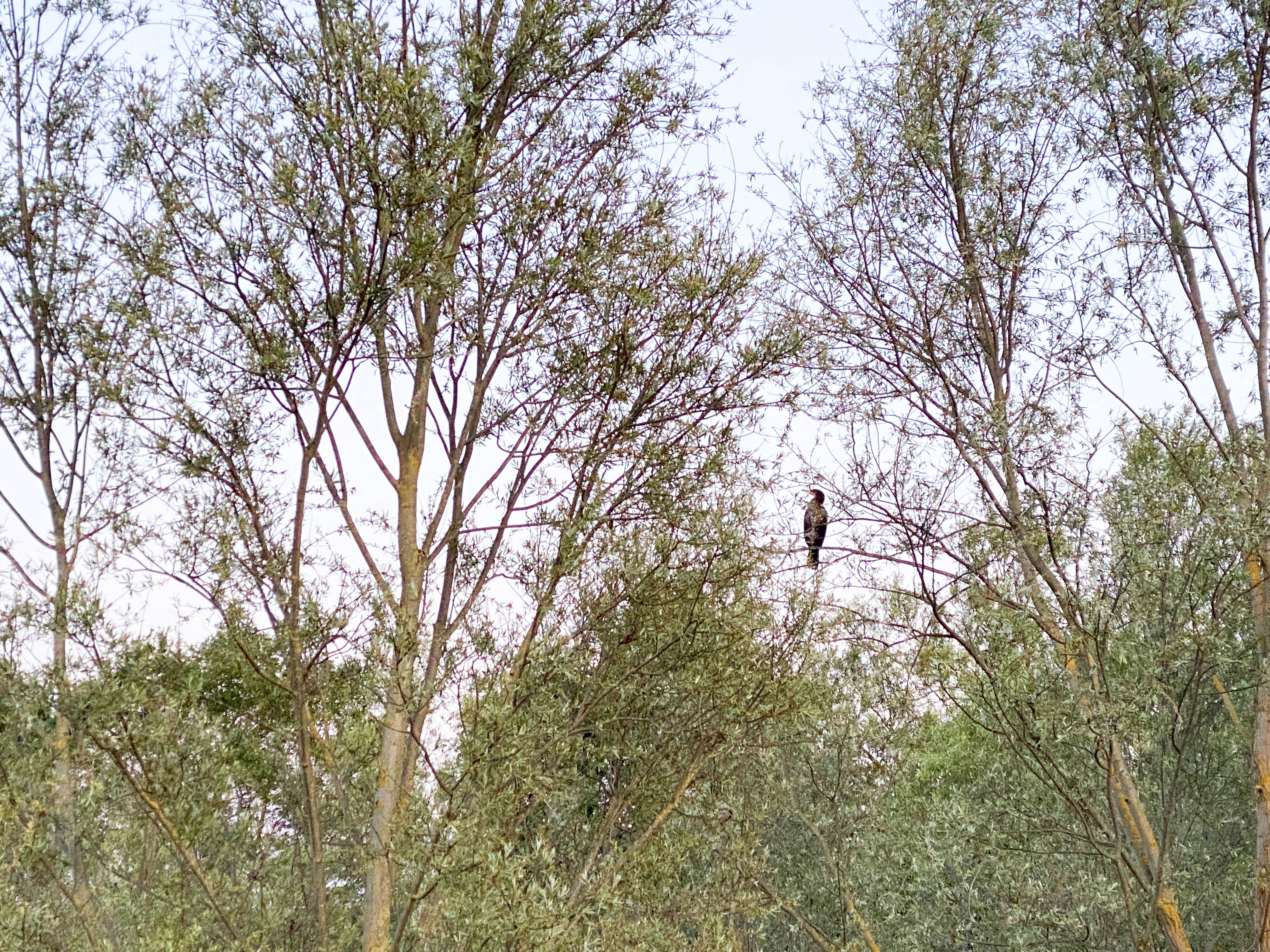
In spring, families of ducks swim excitedly through the trees that three years ago were in a meadow and have now become part of the flooded area. The nutria also feels very much at home here; it can be found in many places throughout the course of the Selz River. The piled up dead wood on the adjacent meadow provides shelter and habitat for lizards, countless insects, numerous dragonfly and butterfly species, such as the horseshoe clover widder in the blackberry hedges and the checkerboard.
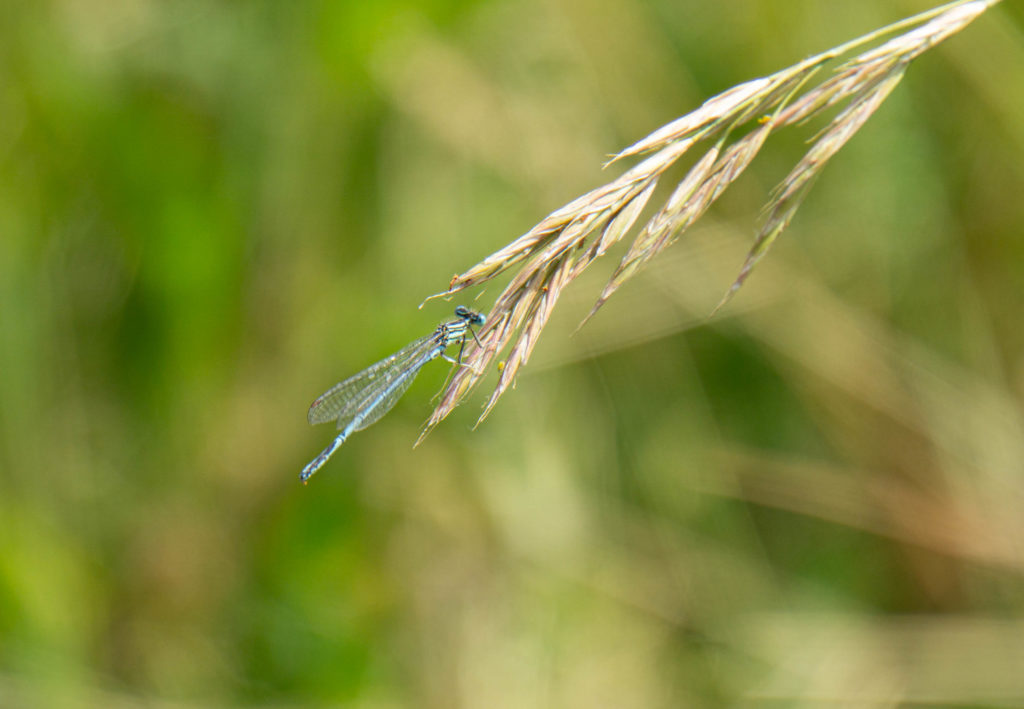
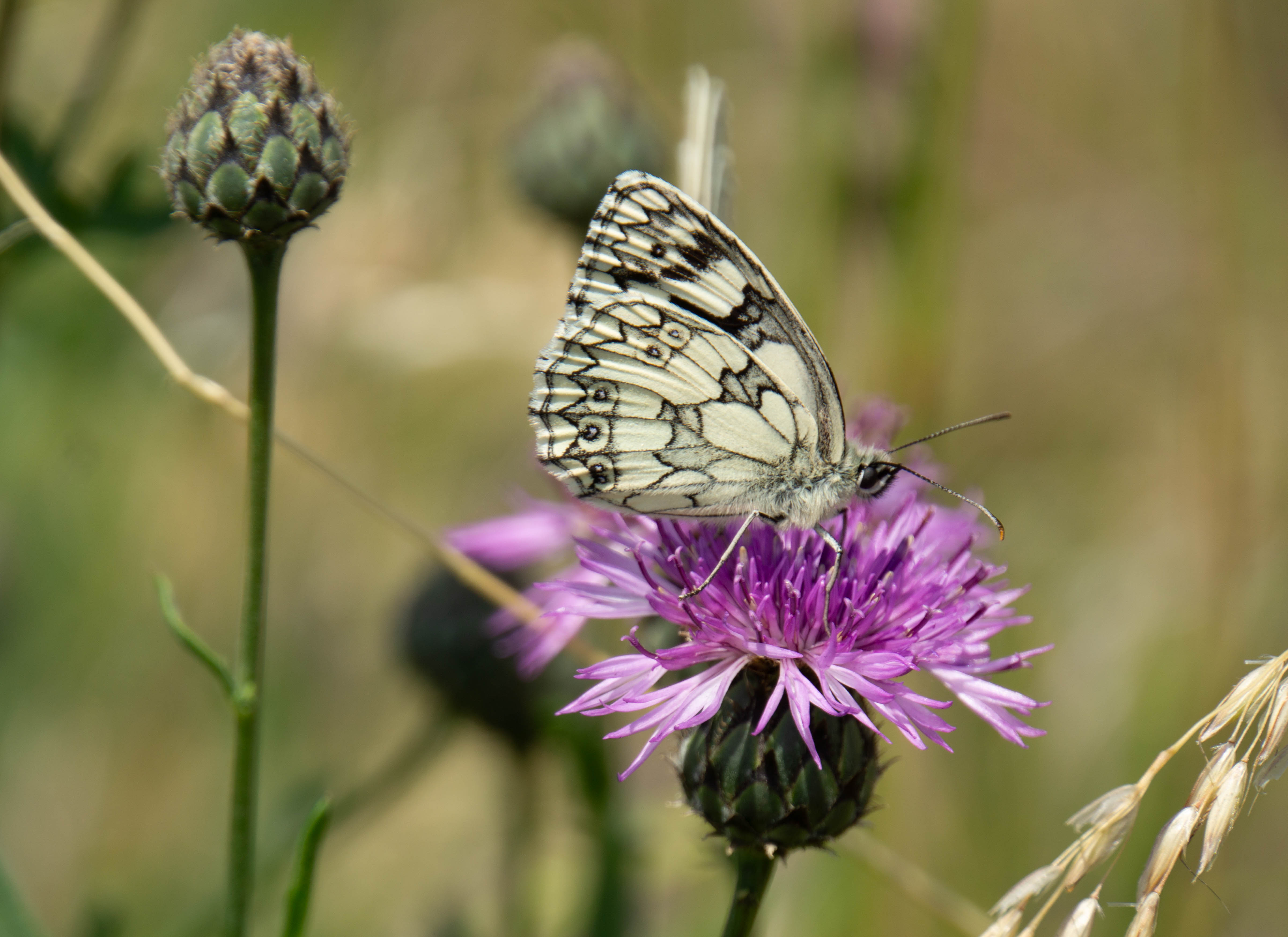
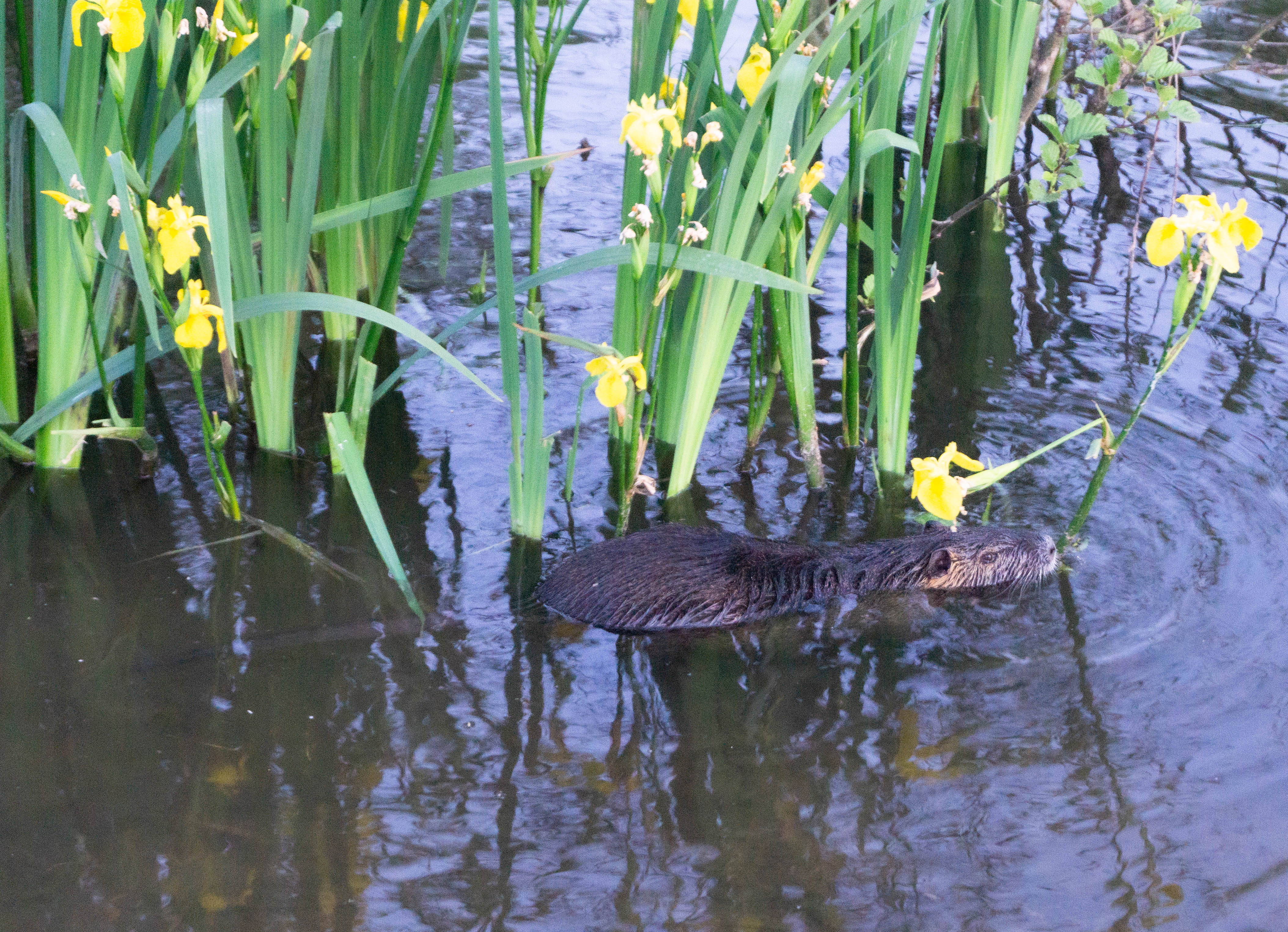
With a bit of luck, we can also spot the kingfisher here, which has its breeding hole in the embankment a little downstream from the Selz. The native bird - known to many through beer advertising - is considered a real eye-catcher with its iridescent blue plumage and flies skillfully directly above the water surface of the Selz River, which meanders between densely overgrown banks. Its occurrence is strongly dependent on clean and food-rich waters. It feeds almost exclusively on fish, but insects and tadpoles are also on its menu.
The Selz Valley Cycle Route leads me to scenic highlights that I would not have suspected here. Really a rewarding tour for nature lovers!
We continue towards the mouth of the river through the Selz Valley, past the recently completed renaturation between Gau-Odernheim and Bechtolsheim. We are curious to see what there will be to discover here in a few years.
A highlight for all birdwatchers - passing the Hahnheimer Bruch
After Hahnheim we dive deep into the wild nature of the Selz valley, flora and fauna in the nature reserves along the bike route are waiting for us. First we reach the "Hahnheimer Bruch", which is now very popular with ornithologists. Here you can observe the gray heron colony and now and then, during the migration season, also cranes. Bluebirds, lapwings, sandpipers, wood sandpipers and stonechat, to name just a few of the inhabitants, also feel at home here. Those who would like to hear the cuckoo can most likely listen to its calls here.
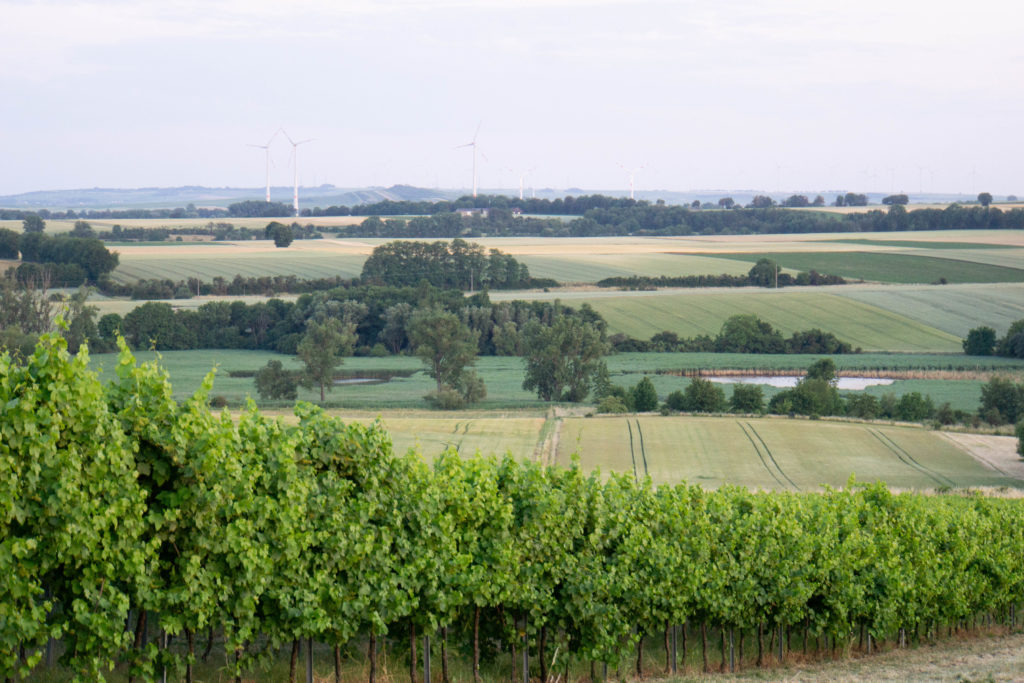
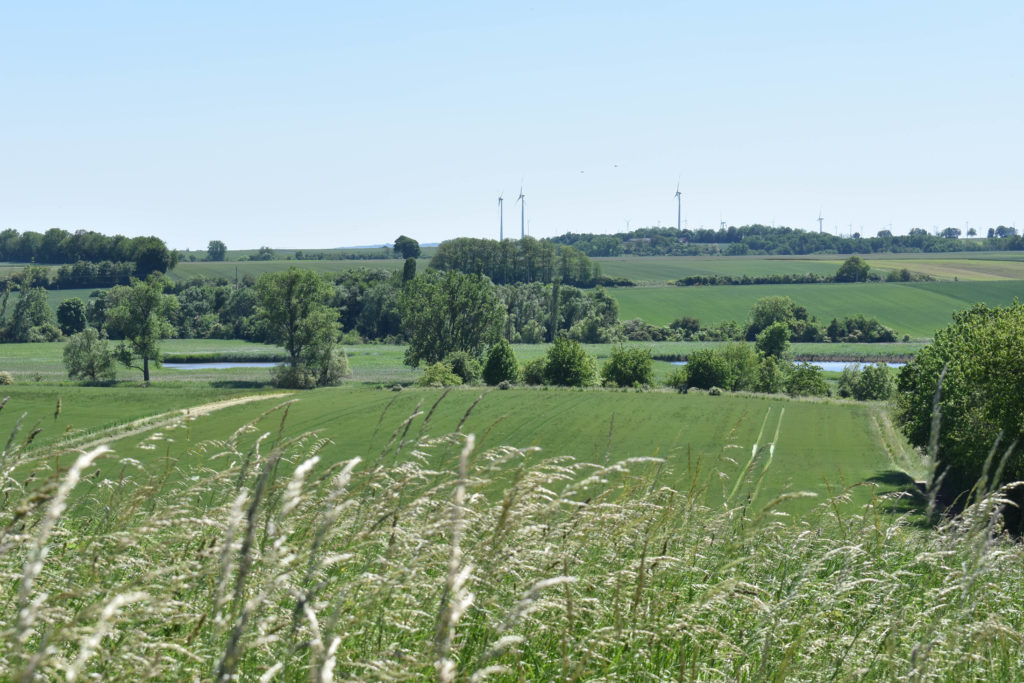
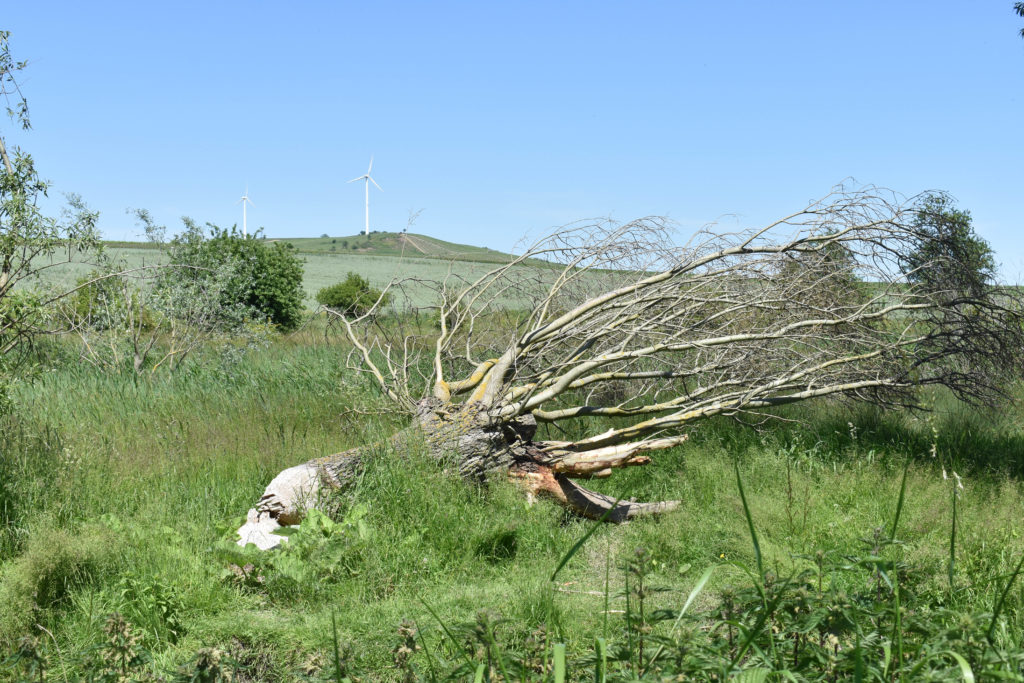
The nature reserve is home to numerous insects that can be spotted on flowers and grasses. For example, swallowtails, glider butterflies, praying mantises, the spotted narrowbill and various species of blue butterflies can be found here. The meadow is adorned with primroses in spring, as well as many other botanical beauties. The Selz Valley's altered habitat on the grasslands and banks provides a home for special plant species, such as Lachenals water fennel, stump-flowered rush, winged St. John's wort, barley sedge, and edged leek, to name a few.
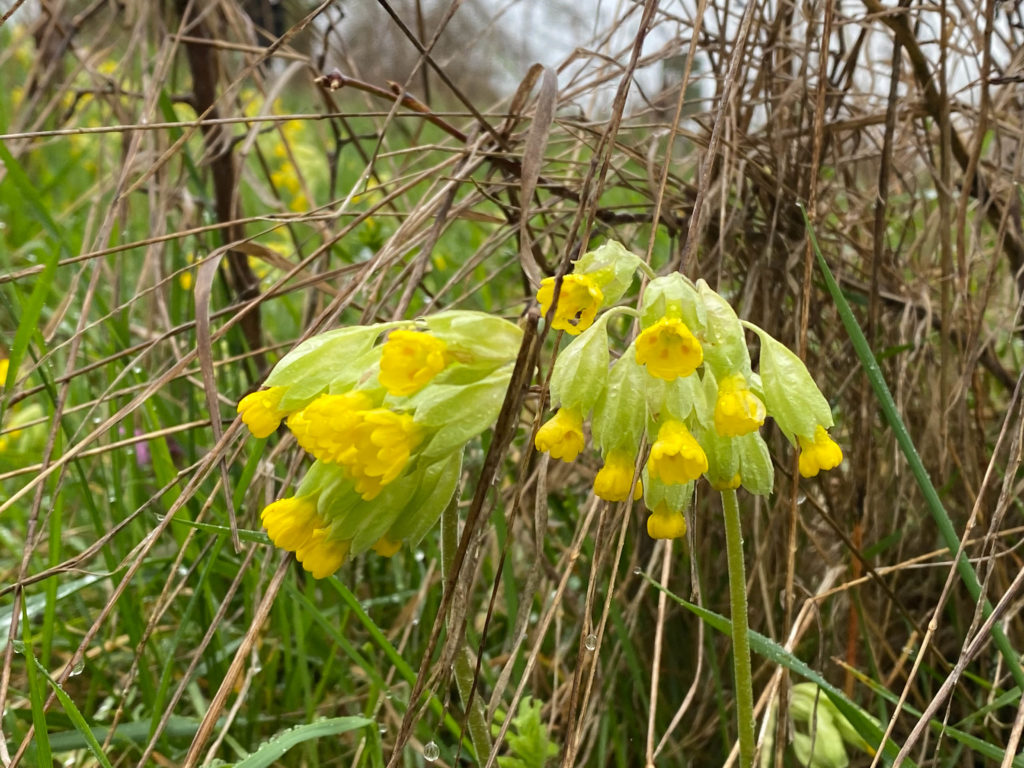
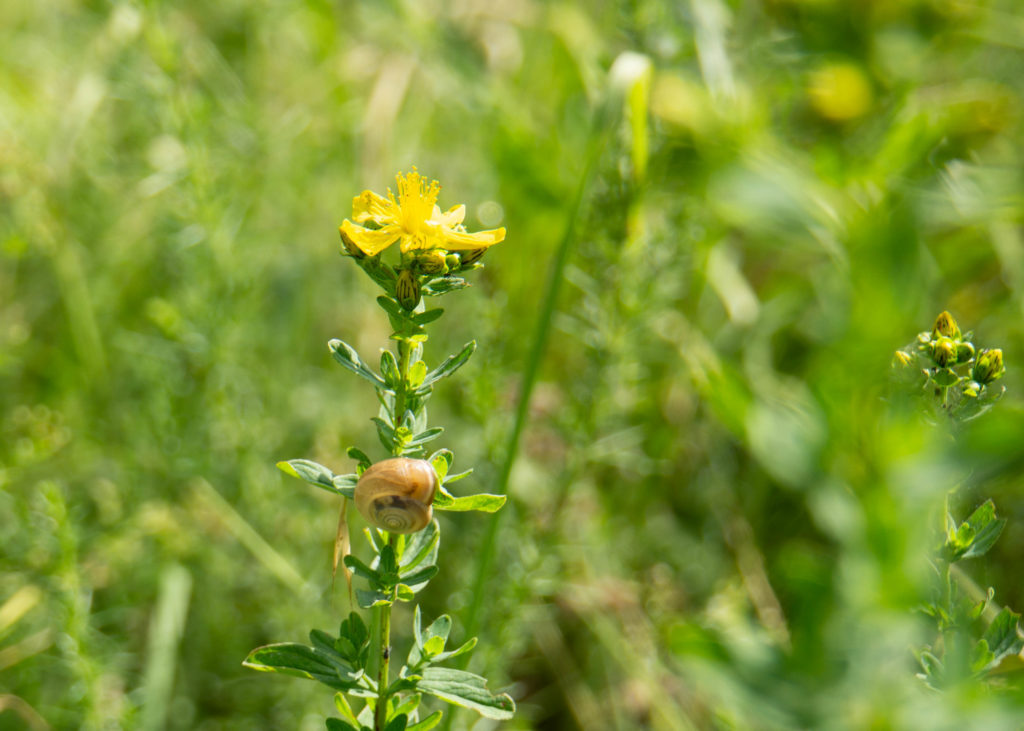
Wild journeymen with mission
Continuing towards the estuary, we pass two Black Angus herds of the responsible graziers, the "Beef heads", over. Since 2020, they have been maintaining the NABU pasture and renaturation project between Hahnheim and Nieder-Olm on behalf of the Selzverband with the support of the NABU Group Rhine-Selz.
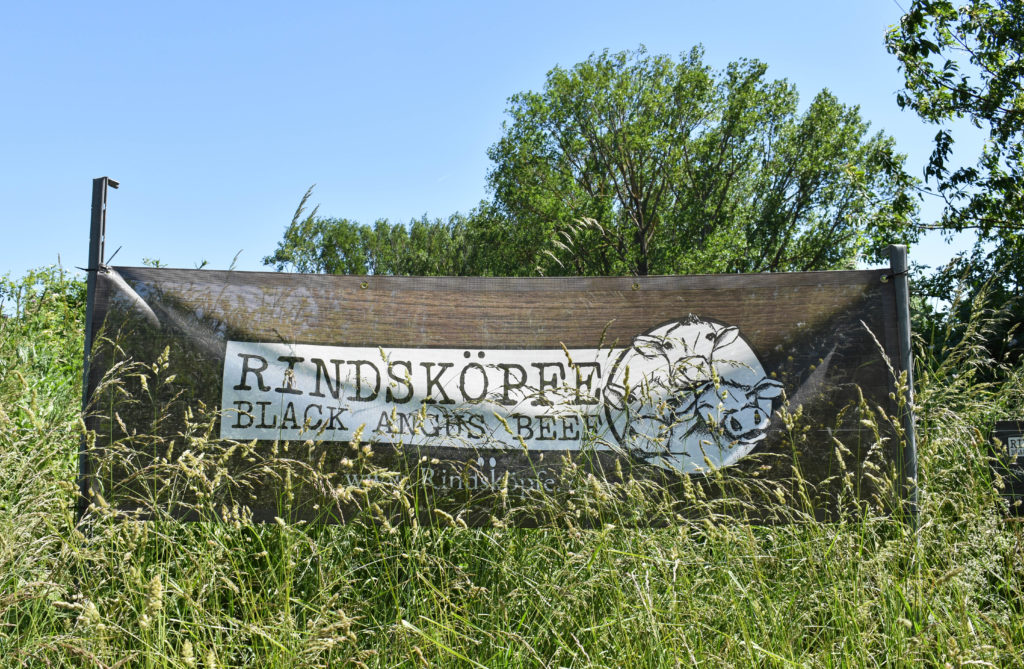
Grazing keeps the grass short and the loosening of the soil by the hooves of the animals provides an important livelihood for ground-nesting birds (such as the lapwing). This is a decisive contribution to the harmony with nature along the small Selz river, which has again been laid in "loops" so that surrounding villages are not flooded during storms. I am surprised to encounter another landscape keeper with impressive horns here: a small herd of Carpathian water buffalo is grazing comfortably on the lush green meadow near Sörgenloch. Originally from Romania, this farm animal is rarely found in our region and differs from its distant congeners in that it also likes to eat reeds and can live on pasture all year round. By clearing the banks of the reeds, amphibians and dragonflies will also find a new habitat on the Selz.
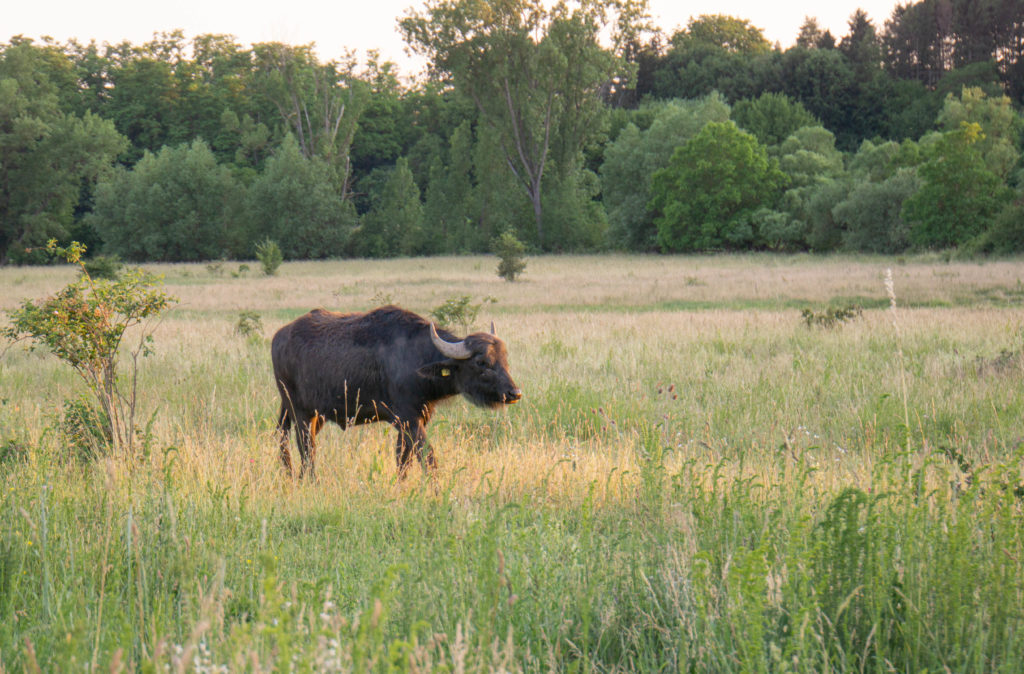
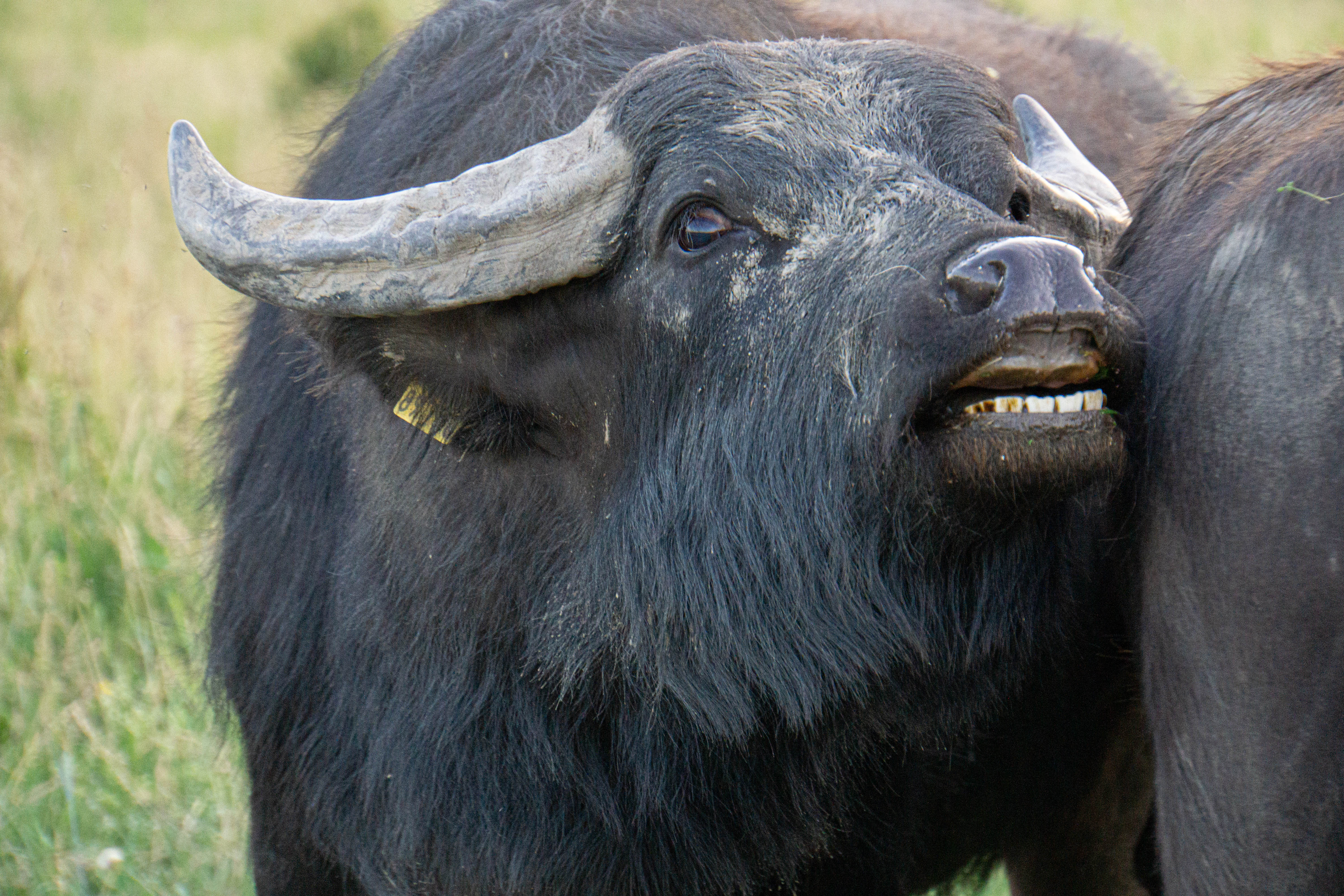
A note from the beefheads:
If you are cycling/walking along the Selz River and we are driving around, please give us time to drive the animals on. We will use tapes and pasture cords to keep the animals as far away from the herd as possible. Do not drive with the wheels unnecessarily into the herd only because you must reach your best time! Also for YOUR SAFETY! The cattle need their time and we do our best to do this at days and times where there is as little obstruction as possible! Thank you for your understanding!
Full of impressions, we get back on the saddle, passing Nieder-Olm in the direction of Ingelheim. After Stadecken-Elsheim we meet at the "Elftausend-Mägde-Mühle" the signposted "Fruit route", which from here on leads along the same route past fruit trees and meadows to our destination in Ingelheim.
The best comes at the end
Shortly before its mouth near the Rhine ferry in Ingelheim-Frei-Weinheim, the Selz runs through the "Sandlache" nature reserve, which makes birdwatchers' hearts beat faster at any time of year. It is part of a chain of nature reserves between Bingen and Mainz. Here in one of the most species-rich areas in Europe, it is worthwhile to shift down a gear and listen to the chirping of the numerous bird species. In the Rhine floodplains with shallow still water areas, large numbers of waterfowl and wading birds cavort at all times of the year. They find their ideal habitat in the floodplain meadows and copses lined with meter-high poplars on the banks of the Rhine and around the islands of Rüdesheimer Aue and Mariannenaue. A boat excursion of the Nabu-Rhine Floodplain worthwhile to discover the biodiversity from the water perspective.
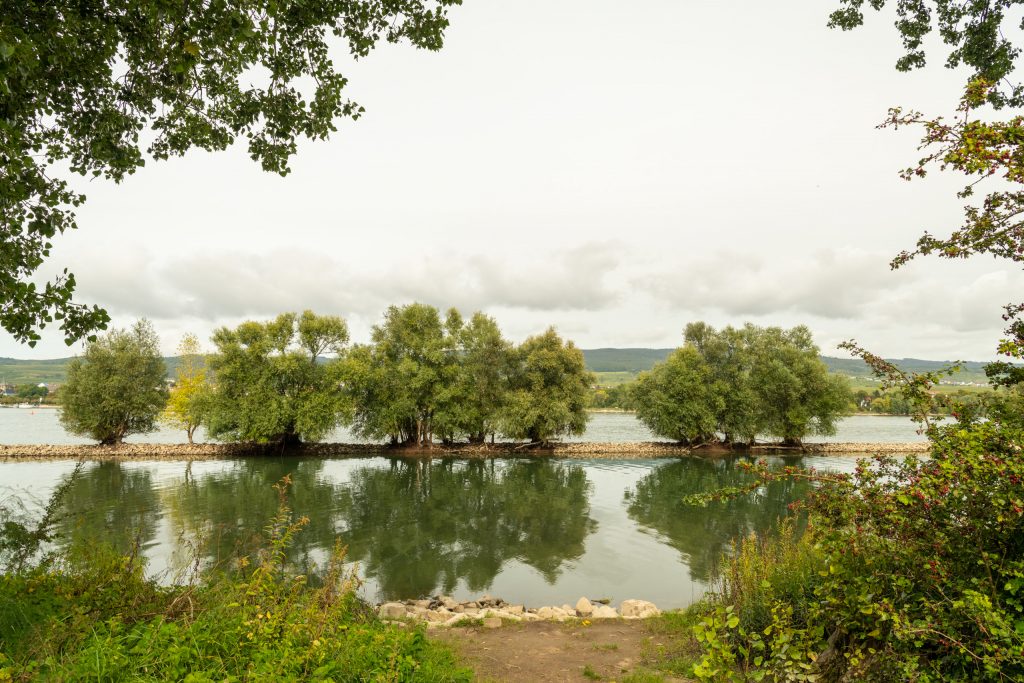
A tour with many different sections and impressions is coming to an end. Starting at the edge of the Palatinate Forest through wide stretches of meadows, past bodies of water and through the secret capital of Rheinhessen. With the sea of vines in view and the mosquitoes on our backs 😉 - insect protection at bodies of water is highly recommended, by the way - we meet Germany's longest river in the red wine town of Ingelheim am Rhein.
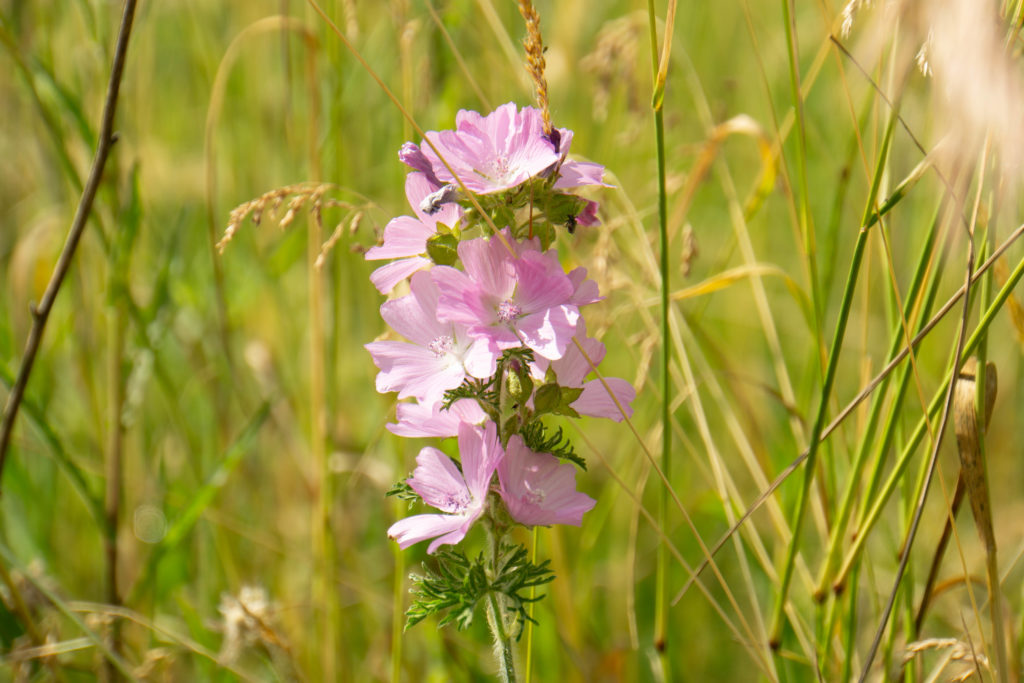
I would like to take this opportunity to thank Paul Britz (1st Chairman) for the informative discussions. NABU local group Rhein-Selz), Wolfgang Hähnel (beaver supervisor, Schafhausen) and Lorenz Frey from the "Beef heads".
